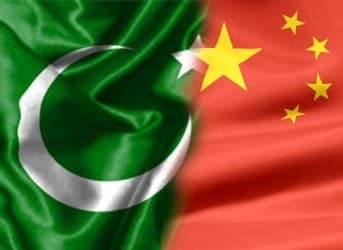The current administration of Pakistani President Asif Zadari is beset by multiple problems.
Relations with its ally in the “global war on terror,” the U.S. have plummeted to their lowest ever level.
But for the average Pakistani, of more immediate concern is the country’s ongoing energy crisis.
The nation’s problem is summed up by the following figures. Pakistan’s current electricity demand is about 25,000 megawatts per day but national current electrical production is less than 20,000 megawatts per day, leaving a deficit of slightly more than 5,000 megawatts, and by 2015, domestic demand is projected to rise to 30,000 megawatts per day.
The result? Massive brownouts and blackouts nationwide, resulting in urban areas facing unscheduled minimum 8-hour power blackouts each day, while in rural areas the blackouts can last as long as 14 hours. Hardly a recipe for social stability, especially when rising electricity prices are factored in.
Pakistan currently depends on oil and natural gas to generate up to 60 percent of its electricity needs, further impacting the country’s balance of payments as the price of oil rises.
And the ongoing power shortages are beginning to impact the country’s bottom line, exports. According to the latest data released by Pakistan's Federal Bureau of Statistics,
Pakistani textile and clothing exports fell by 5 percent to $5.96 billion during first half of the current fiscal year 2011-12, with local industry groups blaming ongoing power shortages. Pakistan Textile Mills Association (APTMA) chairman Mohsin Aziz remarked that because of the nationwide power shortages crippling factories’ output, the country’s textile industry lost $1 billion in exports in first half of the current fiscal year and is likely to lose another $2 billion in the second half.
The figures stand in stark contrast with a 35 percent hike in textile and clothing exports in the fiscal year to June 2011, which reached a record level of $13.8 billion.
Complicating Islamabad’s efforts to resolve the situation, responsibility for determining national energy policy and running the country’s power sector is at present shared out among the nation’s Water and Power Ministry and 19 subordinate agencies, the Ministry of Petroleum and Natural Resources, 16 subsidiary agencies, four other ministries and seven agencies.
End result? Nothing of real value has been accomplished up to now, due to both bureaucratic gridlock and a lack of investment capital.
In an attempt to resolve the issue, Pakistani government officials are pinning their hopes on the Thar Underground Coal Gasification (UCG) pilot project, situated in the Tharparkar desert in Sindh province in eastern Pakistan, which contains the country’s largest coal deposit of about 850 trillion cubic feet sprawled across spanning over 3,800 square miles.
Overall, according to the World Energy Council, Pakistan has slightly more than 2,000 million tons of proven recoverable coal reserves.
But where is the capital to come from to develop these riches?
Enter the dragon.
Pakistan’s provincial Sindh Coal and Energy Department has been able to attract two large Chinese energy companies, China’s state-owned Three Georges Corp. and the Orient Group in their Thar coal projects and have signed memorandums of understating (MoU) with both companies, which have shown interest in developing coal-fired power plants in the Thar and Badin coal fields as well.
Next month delegations from both China Three Gorges Corp. and United Energy Group Limited of China are visiting Pakistan to hold further talks on setting up power projects.
And the Chinese investors are not thinking small. Under the terms of their previous MoUs with the Sindh government, China Three Gorges Corp. plans to establish a 6,000 megawatt coal and wind electricity project in Pakistan, investing $10 billion by 2018, while the Hong Kong based United Energy Group Limited of China intends to establish a 2,000 megawatt power project in Sindh, according to Zubair Motiwala, chairman of the Sindh Board of Investment.
To put the twin projects in context, once developed, they will generate 8,000 megawatts, while the country currently faces an electrical deficit of roughly 5,000 megawatts.
So, what could dim this sunny picture?
For a start, Thar coal is primarily lignite, and according Thar coal is of little use besides conversion to electricity onsite as lignite, is the least energy intensive form of coal, considered a dirty energy source lying somewhere on the spectrum between coal and peat with carbon content between 25 percent to 35 percent.
The fixed carbon content of Thar coal?
Less than 22 percent.
But what this dreary overview of the Thar coal deposits and their development fail to take into account is that the deal may well have larger political overtones, by drawing Pakistan further into China’s orbit while distancing it from the U.S. and providing a valuable counterpoint to China’s rising Asian competitor India.
By providing a possible fix to Pakistan’s energy woes and mollifying the power concerns of the average Pakistani, China’s investment seems a more certain manner of garnering gratitude from Pakistan’s citizens than U.S. drone strikes on Pakistan’s tribal regions.
Accordingly, the final potential investment value of China’s projects cannot be measured in rupees, yuan, or even – dollars.
By. John C.K. Daly of Oilprice.com



















The Chinese are on an energy binge. I think that I could understand it if I was interested, but as it happens I am not.